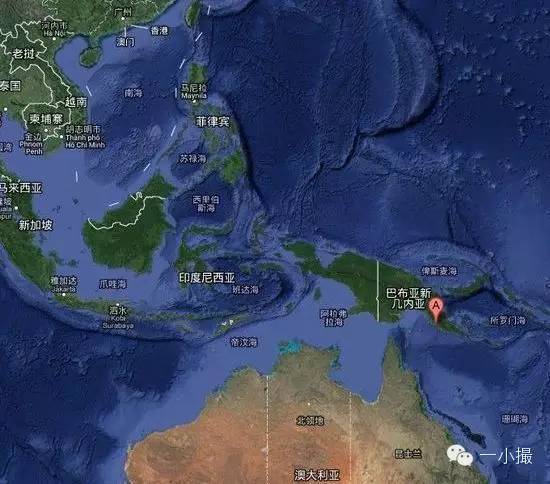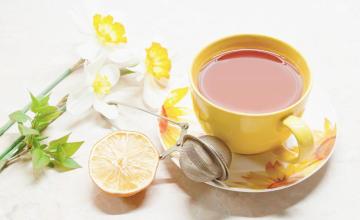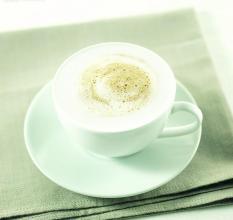Coffee cultivation in Papua New Guinea, the hometown of the Bird of Paradise
The term "fine coffee" was first put forward by Ms. Knudsen of the United States in Coffee and Tea magazine. At that time, Ms. Knudsen, as a coffee buyer of B.C. Ireland in San Francisco, was very dissatisfied with the neglect of the quality of raw coffee in the industry, and even some big roasters mixed a large amount of Robesda beans in the comprehensive beans, so she put forward the concept of fine coffee to advocate the improvement of the quality of the industry. This term is used to describe coffee beans with distinctive flavor characteristics that grow in a special environment. Its use in international coffee conferences makes it spread rapidly.
In fact, according to Ms. Knudsen, people started drinking fine coffee, but later, due to the growing demand for coffee, the discovery and use of new coffee varieties led to the decline of coffee quality. later, people even began to dislike this bad coffee and began to turn to other drinks. In this case, Ms. Knudsen re-made people realize the value of boutique coffee, which led to a boutique coffee boom. In the United States, there are enterprises and stores in pursuit of boutique coffee represented by Starbucks. The market for boutique coffee is also growing. In the 1990s, with the rapid increase of boutique coffee retailers and cafes, boutique coffee has become one of the fastest growing markets in the catering service industry, reaching $12.5 billion in the United States alone in 2007. Now boutique coffee has become the fastest growing coffee market. Coffee producing and importing countries around the world are aware of the great potential of the boutique coffee market, and continue to make efforts to the production and production of boutique coffee.
Papua New Guinea is an island country in the western South Pacific, the second largest country in Oceania and a member of the Commonwealth, including the eastern half of New Guinea and nearby Bismarck Islands, Bougainville Island and so on. The name of the country is composed of Papua and New Guinea, which gets its name from the island.
National bird: bird of paradise (also known as bird of paradise).
Papua New Guinea is one of the least urbanized countries in the world, with only 18 per cent of its urban population and 85 per cent of its national economy derived from agricultural exports. But Papua New Guinea produces one of the best quality coffee in the world. The local coffee variety comes from the Blue Mountain Coffee in Jamaica and belongs to Typica.
Papua New Guinea is located on the island of Guinea, bordering Indonesia and Australia to the south.
In Papua New Guinea, about 75 per cent of coffee products come from small local farms. Many farms reclaim land in the forest, and some are in the depths of the forest, almost isolated from the rest of the world. Coffee in the country is grown on highlands between 1300 and 1800 meters above sea level, so it is of high quality. Although coffee is also grown in some lowlands, the yield is relatively small. Most of the locally grown coffee is grown under natural conditions because of the problems and high costs of transporting chemical fertilizers and pesticides to the farm.
Although Papua New Guinea is close to Indonesia, the coffee taste is completely not used in Indonesia's Mantenin, Papua New Guinea beans, taste clean, full of flowers and rhyme, completely different from Mantenin's miscellaneous flavor and strong flavor.
The two most popular beans from Papua New Guinea in China are sigri and purosa. Many people are accustomed to calling sigri a bird of paradise, while prosa is Prosa. In fact, these are two kinds of beans from two manors (estate). As for the term "bird of paradise", it is still a bit inappropriate, because in fact, the bird of paradise is the national bird of Papua New Guinea, and there is a "bird of paradise" on its national flag, and sigri's raw bean sack is also printed with a bird of paradise, so it is easy to call this bean "bird of paradise" in China.
As for purosa, which entered the eyes of Chinese people after sigri, there is actually a "bird of paradise" on the sack, but because the word "bird of paradise" already has an owner, purosa is called "Prosa."
Papua New Guinea is an island country in Oceania. In Malay, "Papua" means "curly hair". It is said that in 1545, the explorer Retes arrived on the island and found that most of the people's hair on the island was curly, that is, the island was called "the island of curly hair", so the name was handed down.
Located in tropical Papua New Guinea, the climate is humid and rainy, rich in coconuts and coffee. Forests and mineral resources are also rich. Rabur is the sixth largest town in the South Pacific island nation and an important shipping hub. Its rich coffee and other goods are exported from this port.
Papua New Guinea is an island country in the South Pacific, with the second largest population and land area in the South Pacific after Australia. Pakistan not only retains nearly a thousand years of native language and traditional customs, its natural environment is also one of the least developed countries in the world. In 1927, a group of Arabica coffee seedlings from the Blue Mountains of Jamaica drifted across the ocean to Pakistan, opening the coffee history of Papua New Guinea.
Papua New Guinea has a detached and primitive natural environment and its land is vast and fertile. Its unique volcanic rock soil and abundant rainfall create excellent natural conditions for the growth of coffee. The top coffee beans in Papua New Guinea are as beautiful and precious as the country's national bird of paradise. As coffee in the country is widely grown in the highlands of 1300 to 1800 meters above sea level, coffee beans are plump and varied in taste, with pleasant acidity and fruit-like sweetness.
Sigri Estate was one of the first coffee farms to emerge when coffee cultivation in Papua New Guinea began to be commercialized in 1950. Siguri Manor is located in the western highlands of the Waghi Valley, with an elevation of 1600 meters, rich precipitation and fertile soil to ensure the high quality of its raw coffee beans. Although the requirements for boutique coffee were very strict at that time, the newly established Siguri Manor was quickly recognized by the world for its high quality.
In order to ensure high quality, Siguri Manor has very strict requirements for raw beans. The bright red and ripe fruits were picked by hand, peeled and fleshed on the same day, and then washed with live water to remove the final mucous membrane. Unlike his estate in Papua New Guinea, Siguri's carefully selected raw beans are washed for 24 hours and fermented for three days, then soaked to ensure their cleanliness, and finally sun-dried and hand-graded.
With the continuous improvement of Sigri's reputation, he finally became one of the best coffee in the world more than 20 years ago, and became a popular boutique coffee for coffee lovers.
Papua New Guinea is one of the least urbanized countries in the world, with only 18 per cent of its urban population and 85 per cent of its national economy derived from agricultural exports. But Papua New Guinea produces one of the best quality coffee in the world. The local coffee variety comes from the Blue Mountain Coffee in Jamaica and belongs to Typica.
Papua New Guinea is located on the island of Guinea, bordering Indonesia and Australia to the south. Although Papua New Guinea is close to Indonesia, the coffee taste is completely different from Indonesia's Mantenin, Papua New Guinea beans, taste clean, full of flowers and rhyme, completely different from Mantenin's miscellaneous flavor and strong flavor.
Papua New Guinea is located on the island of Guinea, bordering Indonesia and Australia to the south. Although Papua New Guinea is close to Indonesia, the coffee taste is completely different from Indonesia's Mantenin, Papua New Guinea beans, taste clean, full of flowers and rhyme, completely different from Mantenin's miscellaneous flavor and strong flavor.
It has the same mellow and full-bodied taste as Man beans, but the difference is that coffee tastes much cleaner and sweeter than Man beans, which is different from the taste of Man syrup and more similar to the taste of American beans, cocoa and chocolate.
Because the national bird of Papua New Guinea is the bird of paradise, so many domestic coffee gluttons call it the bird of paradise, and Sigri is just one of many "birds of paradise" (sigri is a farm name), and AA is the grade of beans, according to the size of beans, AA is the most neat big beans, basically 17-18 eyes.
In coffee tasting terms, a generally accepted evaluation of Papua Guinean coffee is delicate, which means complex in Chinese. This is a commendatory comment. It is difficult to describe the taste of bird of paradise with a certain taste word. You can close your eyes and think of the taste feast brought to you by the bird of paradise.
If you taste Papua New Guinea coffee beans with Guatemala Antigua coffee, it will have a different taste. As we all know, Papua New Guinea coffee has the characteristics of fruit flavor and herbal aroma, while Guatemala Antigua coffee has a slightly spicy and cocoa flavor. The tip of the tongue has both fragrant fruit flavor and cocoa flavor, the two flavors blend and collide, giving people a unique new coffee experience.

Important Notice :
前街咖啡 FrontStreet Coffee has moved to new addredd:
FrontStreet Coffee Address: 315,Donghua East Road,GuangZhou
Tel:020 38364473
- Prev

The origin, characteristics and introduction of Colombian coffee
The traditional deep-roasted coffee has a strong and memorable flavor. In 1808, coffee was first introduced to Colombia, which was brought by a priest from the French Antilles via Venezuela. Today, the country is the second largest producer after Brazil, with an annual output of 13 million bags of 60 kg each, while Brazil produces 22 million bags. Coffee's in Goran.
- Next

The Origin of Coffee trees in Ethiopia
The birthplace of coffee-Ethiopia. The coffee tree originated in Ethiopia, which was originally a wild plant here, and the name coffee comes from the Ethiopian town of Kaffa. In fact, many coffee trees in Ethiopia are still wild plants, and the coffee grown on this coffee tree is full-grained and slightly alcoholic. Humans may have been in the 9th century.
Related
- Does Rose Summer choose Blue, Green or Red? Detailed explanation of Rose Summer Coffee plots and Classification in Panamanian Jade Manor
- What is the difference between the origin, producing area, processing plant, cooperative and manor of coffee beans?
- How fine does the espresso powder fit? how to grind the espresso?
- Sca coffee roasting degree color card coffee roasting degree 8 roasting color values what do you mean?
- The practice of lattes: how to make lattes at home
- Introduction to Indonesian Fine Coffee beans-- Java Coffee producing area of Indonesian Arabica Coffee
- How much will the flavor of light and medium roasted rose summer be expressed? What baking level is rose summer suitable for?
- Introduction to the characteristics of washing, sun-drying or wet-planing coffee commonly used in Mantenin, Indonesia
- Price characteristics of Arabica Coffee Bean Starbucks introduction to Manning Coffee Bean Taste producing area Variety Manor
- What is the authentic Yega flavor? What are the flavor characteristics of the really excellent Yejasuffi coffee beans?

